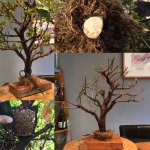sorce
Nonsense Rascal
Air layer achievement unlocked! I always want to try and get a ring of bark off in one piece, and it almost never works out that way. This one was compliant:
View attachment 103537 View attachment 103538
I have similair stupid goals!
Glad to see your determination paid off!
Sorce


